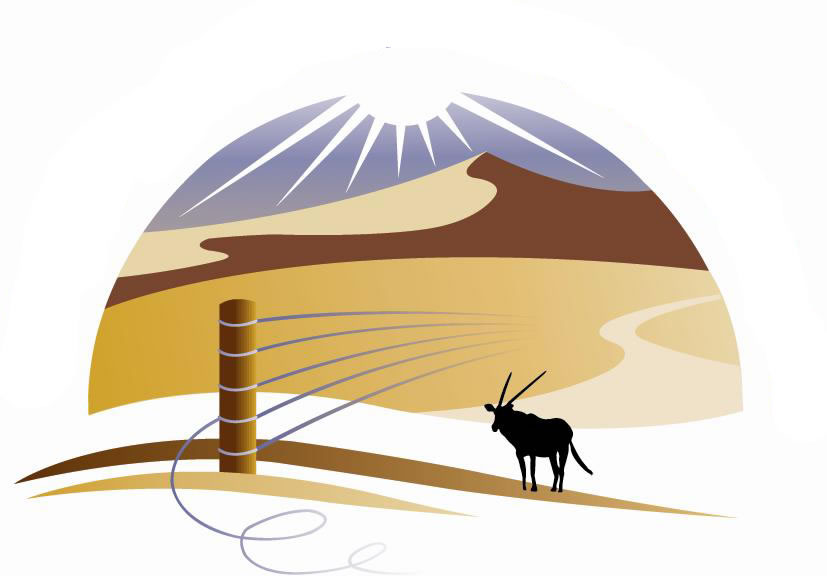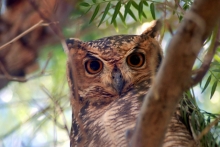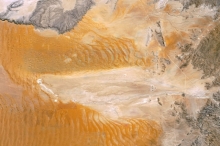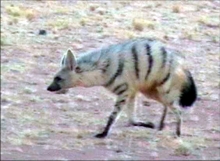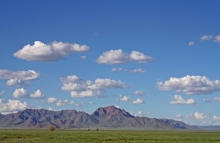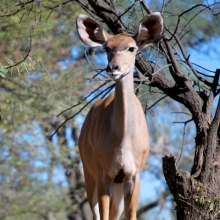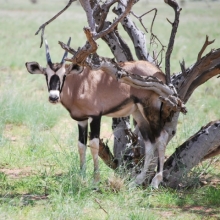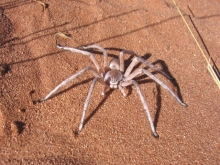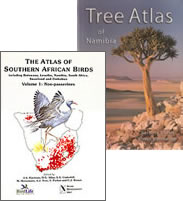Environment
Recent history of land use
Over the past 20 years the freehold land within the Landscape has increasingly turned from livestock farming to wildlife, biodiversity and landscape conservation. Today the main land-use in much of the area is low-impact tourism with some low levels of wildlife off-take in a few localities. This form of land-use is highly compatible with that of the neighbouring Namib-Naukluft Park, run by the Ministry of Environment and Tourism.
Past land use in the western parts of Namibia was mainly small-stock farming. Land was partitioned into camps by thousands of kilometers of mesh and strand fencing. While many of the internal fences have been removed on farms now used for wildlife and tourism, the boundary fences generally remain. Other impacts of small-stock farming were overgrazing, rangeland degradation and soil erosion, depletion of wildlife and persecution of predators which included poisoning, which severely depleted populations of scavenging species.
When small-stock farming was the dominant land use, the eastern border of the Namib-Naukluft Park was a zone of major conflict between MET staff and neighbouring farmers. Transgressions included unauthorised entry into the Park, large-scale poaching and farmers enticing wildlife from the Park onto their farms (by use of fence funnels, water and licks) for the purpose of hunting and selling the meat. As a result, in the early 1980s a strong fence was built along the entire eastern border of the Namib-Naukluft Park. While this fence significantly reduced poaching and loss of wildlife from the park, it caused another problem. The west-east movement of wildlife from the Namib plains up into the escarpment zone, particularly by oryx in dry years, was cut off. Similarly, the east-west movement of plains game from the escarpment out onto the grassy Namib plains in good rainfall years was cut off. Animals in the vicinity of the Naukluft Mountains were able to pass through the narrow neck (about 12 km wide) connecting the Namib with the Naukluft, but in other parts of the Namib many animals (mainly oryx and ostriches) died against the fence. Over successive dry periods the numbers of oryx declined in step-wise fashion, not being able to recover sufficiently in the intervening better rainfall years.
There is now compelling evidence for the removal or breaching of this fence, as well as other obstructing fences, to allow the west-east movement patterns to resume. The removal / breaching of the fence should be undertaken in a strategic manner. Not all the fences in the GSNL need to be lifted or breached. Some land uses would make this inappropriate. And some land owners / custodians may not wish to do so at this time. Only where there are land owners that have compatible wildlife and tourism land practices to that of the Namib-Naukluft Park, and where people are willing to participate, would the opening up of landscapes take place. Where there is conflict with neighbours, or conflicting land uses, then the fence should be retained and maintained.
The Ministry of Environment & Tourism, in its Strategic Plan (2007), has embraced the notion of co-management approaches to landscapes and biodiversity conservation across different land tenure systems where different land owners, custodians and managers work together towards achieving a common Vision, Objectives and Outcomes, and do so by implementing a set of agreed Actions. The core Outcomes envisaged by the MET in its Strategic Plan include the establishment of collaboration and co-management with partners to promote and enhance broad-based approaches to (a) conservation and sustainable natural resource management and (b) socio-economic development. These evolving changes in the sector have created opportunities for different land holders with compatible land uses to collaborate and develop co-management approaches for landscape conservation such as those being implemented in this landscape.
